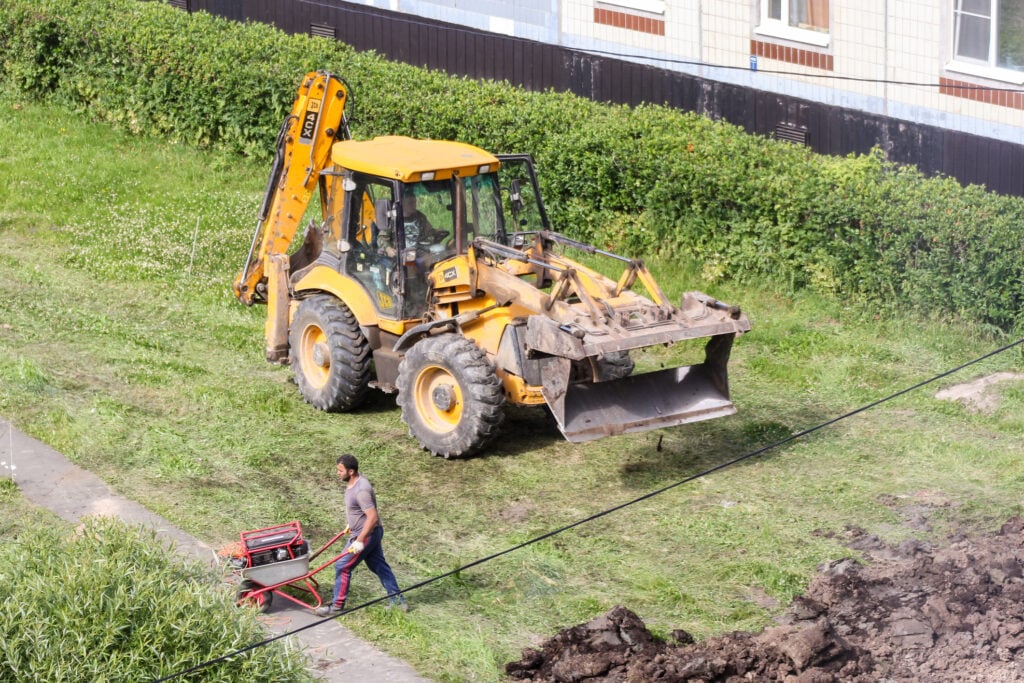Construction and land development activities near your property can have a significant impact on your private well water quality. Excavation, drilling, blasting, and grading can introduce contaminants, disturb groundwater flow, and compromise well integrity. In this article, we’ll explore why it’s essential to test your well water after nearby construction and what contaminants to check for to ensure safe drinking water.
How Construction Affects Well Water Quality
Nearby construction or land development can affect well water quality through:
- Groundwater Disruption: Digging and drilling can disturb the natural flow of groundwater, introducing sediment and contaminants.
- Chemical Runoff: Construction sites often use chemicals like solvents, sealants, and fuel that can leach into the groundwater.
- Vibration and Blasting: Heavy equipment and blasting activities can crack well casings, allowing contaminants to enter the well.
- Soil Erosion and Sediment: Land clearing and grading can increase soil erosion, leading to sedimentation and turbidity in the well water.
When to Test Your Well Water After Construction
To ensure safe drinking water, test your well water:
- Immediately After Construction: To check for contaminants introduced during the construction process.
- One to Two Months Later: To ensure no lingering contaminants are present after the groundwater has settled.
- After Heavy Rainfall or Flooding: If construction activities have altered the landscape, increasing the risk of runoff contamination.
Key Contaminants to Test For
Nearby construction can introduce a range of contaminants. It’s crucial to test for:
- Total Coliform Bacteria and E. coli: Indicators of bacterial contamination from soil disruption or septic system disturbances.
- Nitrates and Nitrites: Often linked to soil disturbance or septic system impact.
- Heavy Metals: Such as lead, arsenic, and mercury, which may be disturbed from the soil during excavation.
- Volatile Organic Compounds (VOCs): From fuel, solvents, and construction chemicals used on-site.
- Turbidity and Sediment: High turbidity can indicate sediment disturbance, which may harbor bacteria and other contaminants.
How to Protect Your Well During Nearby Construction
- Notify Contractors: Inform nearby contractors of your well’s location to minimize disturbance.
- Inspect the Well Cap and Casing: Ensure the well cap is securely sealed and the casing is intact.
- Install Silt Fencing: Use erosion control methods to prevent sediment runoff toward the well.
- Divert Surface Water: Grade the surrounding area to direct surface water away from the wellhead.
What to Do If Contaminants Are Found
If your well water tests positive for harmful contaminants:
- Stop Using the Water Immediately: Switch to bottled water for drinking, cooking, and bathing until the issue is resolved.
- Disinfect the Well: Perform shock chlorination to eliminate bacteria and pathogens.
- Install a Water Filtration System: Choose a system designed to target the specific contaminants found.
- Retest the Water: After remediation, retest to ensure the water is safe for consumption.
Conclusion
Nearby construction or land development can significantly impact your well water quality. By testing your well water after construction and taking proactive measures to protect your well, you can ensure safe drinking water for your household.
Learn more about water testing services today.

